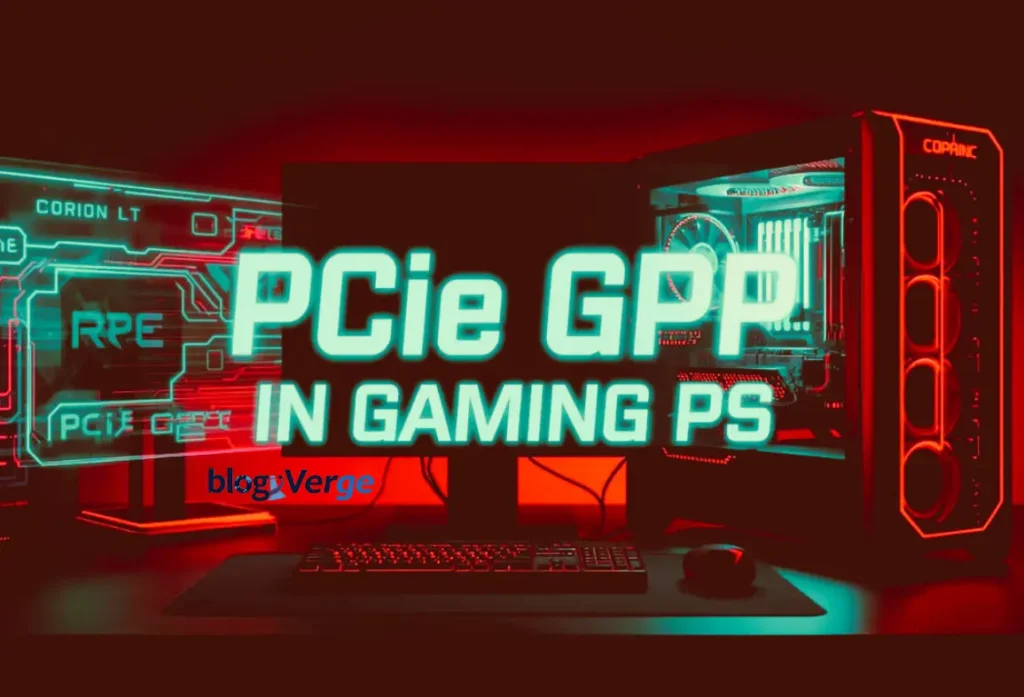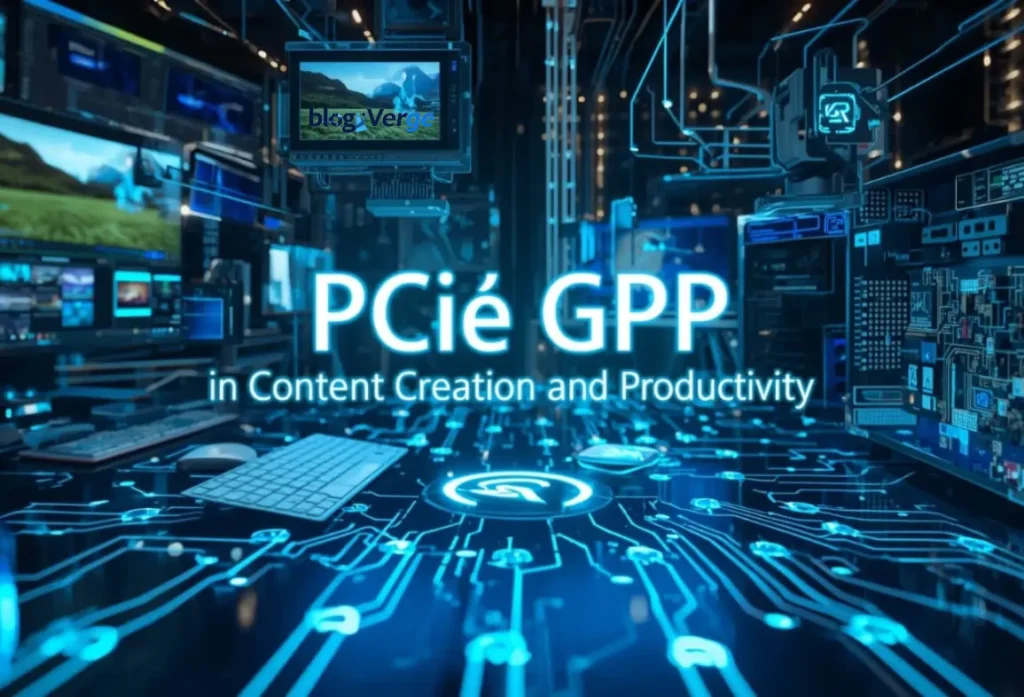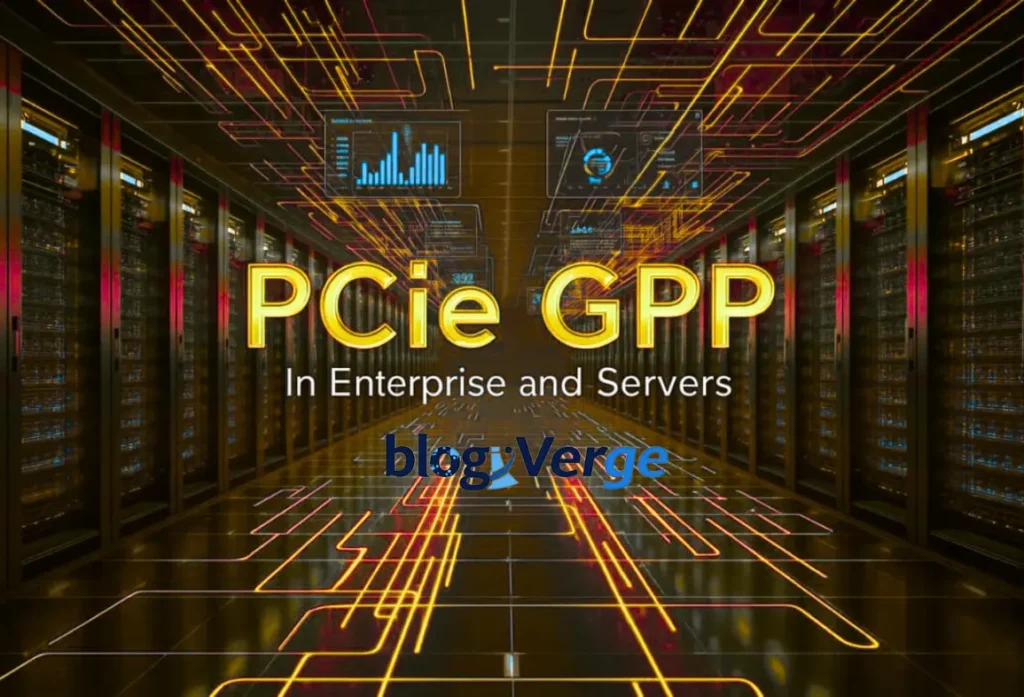PCIe GPP (General Purpose PCI Express) is one of the foundations of modern computing in the rapidly developing world of PC hardware. PCIe is nothing new, of course, as the standard used to connect CPUs, GPUs, SSDs, and expansion cards, but PCIe-GPP goes a step further and is a flexible, scalable, and efficient interconnect. It enables dynamic lane assignment to various devices, which is a highly sought-after requirement by gamers and content creators as well as enterprise users.
PCIe-GPP is a flexible beauty. Unlike traditional PCIe slots, which are primarily dedicated to a specific use case, PCIe-GPP lanes can be dynamically shared between GPUs, NVMe SSDs, and high-performance cards. This causes it to roll, either on the enterprise-level software, 8K video, or even the newest AAA titles.
Key highlights of PCIe GPP include:
- High-bandwidth transport of data-intensive applications
- NVMe SSD support with super-high data transfer rates.
- Dynamic per-lane assignment to minimize bottlenecks.
- Scalability for both consumer and enterprise systems
Table of Contents
Understanding PCIe GPP – How It Works
Architecture and Functionality
At its core, PCIe-GPP is built on the PCI Express protocol and extends it into the general-purpose computing space. Since GPP lanes are dynamically allocated, rather than permanently assigning lanes to a single device, they can be dynamically allocated to the device that requires the bandwidth at any given time. This allows for easy multitasking and optimal operation of the computer.
The bus that connects the AM5 products with the devices on the current motherboards is the PCIe-GPP. GPUs enable image creation at a much faster rate due to increased communication, and NVMe SSDs can access information in just a few seconds. The latency is minimized with smart lane assignment, and maximum throughput is attained for all elements that have PCIe-GPP.
Why PCIe GPP Matters in 2025
By 2025, work demands will be more demanding. AI-powered work, real-time 3D renderings, and a broad range of applications: PCIe GPP does not allow any single component to be the bottleneck. It has some of the most influential advantages, such as:
- PCIe 5.0 and PCIe 6.0 compatibility
- Lower latency is necessary to be productive and to play games.
- Multitasking is efficient even with heavy loads.
- Next-generation hardware design that is future-ready.
Offering bandwidth at the point of maximum demand, PCIe GPP also ensures that systems constructed today will be strong and functional tomorrow.
PCIe GPP in Gaming PCs

Enhancing Graphics and Speed
Gamers are the biggest beneficiaries of PCIe GPP because it directly affects the performance of the graphics card and the responsiveness of the system. The existing GPUs consume enormous bandwidth, and PCIe GPP ensures that GPUs never share bandwidth with other components, which undermines their performance.
Bullet-point benefits for gamers include:
- Improved stability of higher frame rate by using faster communication between the GPUs and the CPU.
- Multi- or dual-GPU in enthusiast systems.
- Reduced latency to enable better online multiplayer.
- Virtual reality and augmented reality applications require a steady supply of PCIe lanes, so they must be future-proofed.
Real-World Gaming Performance
In practice, PCIe GPP eliminates shared bottlenecks. Players can stream on sites like Twitch while playing high-quality 4K games without lag. NVMe SSDs utilizing PCIe bandwidth significantly reduce loading times, as esports players who play professionally have learned that milliseconds matter, and the lower the latency, the more responsive it is. Any person who takes gaming seriously will find PCIe GPP a better gaming experience.
PCIe GPP in Content Creation and Productivity

Workstation and Creative Workloads
To the creators, high-performance productivity systems are based on PCIe GPP. Video editors, animators, and developers work with massive datasets every day, and PCIe GPP allows them to work effectively. NVMe SSDs over PCIe lanes can access files in almost no time, whereas GPUs over GPP lanes can perform real-time rendering without a problem.
Key advantages for content creators include:
- GRB real-time rendering accelerated with a graphics card.
- Light-speed access to NVMe storage to edit 4K/8K projects.
- Capture card support, sound card, and RAID controller support.
- Flexible assignment of lanes between a range of productivity machines.
Efficiency and Reliability
PCIe GPP helps to prevent congestion caused by creative employees switching tasks. It can be the making of a video, the rendering of a few monitor frames, or the editing of a vast design file; the lanes are bandwidth-assignment-stable automatically. This demonstrates accelerated production, editing, and performance-making. Creators will need PCIe GPP in 2025.
PCIe GPP in Enterprise and Servers

Scalability for Business Systems
PCIe GPP is widely used to carry advanced workloads across enterprises and data centers. All the processes of AI training, machine learning, cloud computing, and analysis of big data consume enormous bandwidth. The PCIe GPP offers a scaling option that enables multiple GPUs, storage cards, and networking cards to work together.
Benefits for enterprise systems include:
- Applications that require parallel processing with AI and ML.
- Faster transfer of information in the cloud with high-performance networking.
- Lane assignment efficiency and virtualization performance between VMs.
- Enterprise hardware upgrade support for PCIe 6.0 is planned for the future.
Business Continuity and Efficiency
In PCIe, the business attains better uptime, scalability is optimized, and reliability is enhanced. Whether it is a financial institution or a research laboratory, it allows the use of high-performance computing (HPC) without disrupting data transfer. The PCIe is the answer to operational efficiency as the workload in the enterprise keeps increasing.
Conclusion
PCIe is delivering the computing revolution of 2025 by offering future-proof, fast, and flexible connectivity between gaming personal computers, creative workstations, and enterprise servers. It intelligently allocates bandwidth, ensures that all components are operating at full capacity, reduces latency, and enables greater overall efficiency to power modern systems.
The PCIe GPP also provides gamers with lower latency, improved graphics performance, and smooth frame rates. Since it can render in real-time and store information in a flash, developers are known to use it to scale seamlessly and render powerful workloads without strain. It ensures the infrastructure of enterprises is future-proof by providing scalability, reliability, and full compatibility with next-generation technology.
After all, PCIeGPP is not only performance-enhancing, but it also attempts to redefine the operation of systems. Rather than being another upgrade, it is a monumental influence in the current development of computing itself.
FAQs
Q1: What does PCIe GPP mean?
Ans: It is referred to as General Purpose PCI Express, which is a dynamic interface where PCIe lanes are dynamically allocated to other hardware devices.
Q2: Do you think PCIe GPP is different than standard PCIe?
Ans: Indeed. The performance and minimization of bottlenecks are achieved by active sharing between devices in GPP lanes rather than reserved PCIe slots.
Q3: PCIe GPP? PCIe 5.0 and PCIe 6.0?
Ans: Yes, it is full next-generation PCIe-compatible.
Q4: Why do the players care about PCIe GPP?
Ans: It also provides reduced latency, better gaming performance, and better connection with the GPU.
Q5: Are content makers in need of PCIe GPP?
Ans: It is more efficient in terms of being able to multitask frequently, render on the fly, and store quickly.

